Litecoin’s Journey: From 2011 to the Modern Crypto Era
Litecoin began as a fast, low-fee alternative to Bitcoin and has evolved through upgrades, community support, and new integrations. This guide traces its origin, technical choices, major milestones, and what investors and users should watch today.
By Yaser | Published on October 3, 2025

Origins: How and Why Litecoin Was Created
Litecoin was created by Charlie Lee as a deliberate experiment to complement Bitcoin. In 2011, Lee forked Bitcoin’s codebase and made specific changes to improve transaction speed and accessibility. As a result, Litecoin aimed to make everyday payments easier and to be friendlier to hobbyist miners. Over time, this original mission shaped community culture: more practical, faster experiments with upgrades, and a focus on payments. For GrindToCash readers, understanding Litecoin’s origin helps you see its design trade-offs and why it has stayed relevant for over a decade.
Who created Litecoin and what motivated the fork
Charlie Lee, an early Bitcoin developer, launched Litecoin to address perceived limitations in Bitcoin’s usability for small payments. He wanted a testing ground for changes and a currency optimized for speed and low fees, while keeping Bitcoin’s core ideas intact.
The early community and adoption patterns
Litecoin’s community grew quickly among early crypto enthusiasts. Exchanges listed LTC early on, and merchants experimenting with crypto often accepted it as a low-fee alternative. This grassroots adoption gave Litecoin practical utility beyond being “just another coin.”
The “digital silver” concept explained
People often call Litecoin “digital silver” to Bitcoin’s “digital gold.” The metaphor captures the idea: Bitcoin aims for store-of-value status, while Litecoin emphasizes fast, low-cost transactions and a complementary role rather than direct competition.
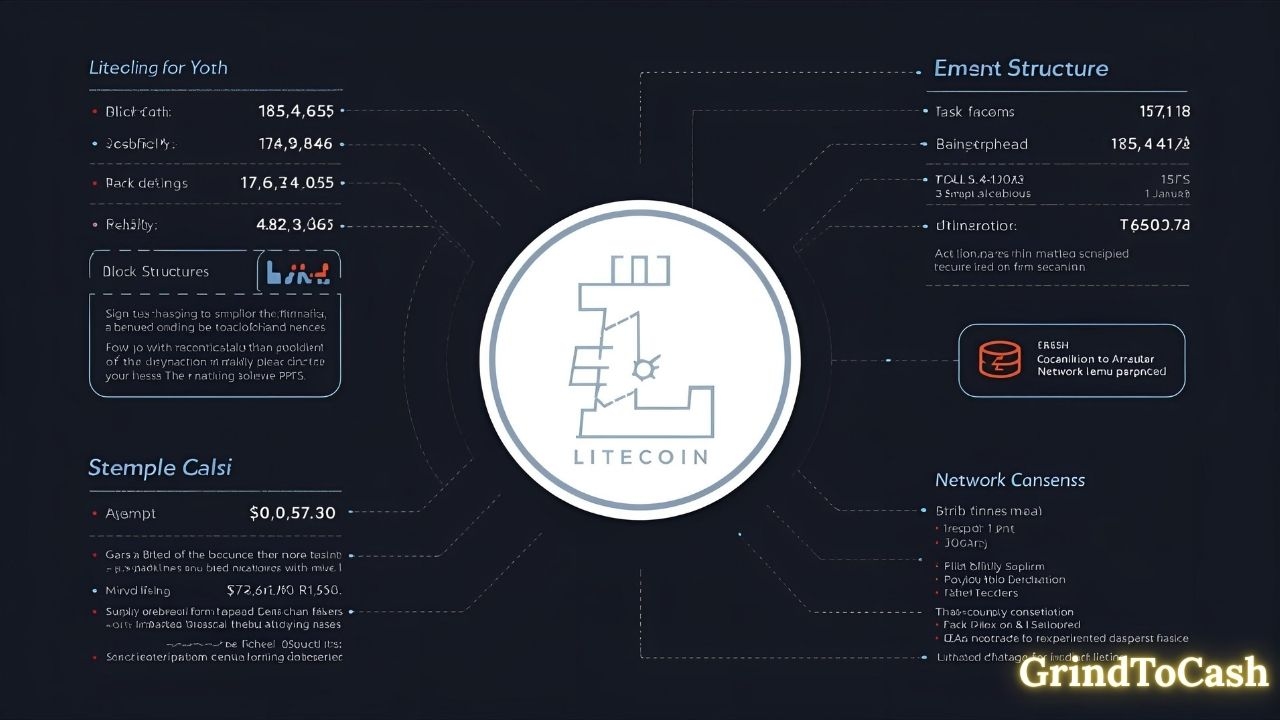
Core Technical Differences That Shaped Litecoin
From the start, Litecoin made specific technical choices to set it apart. It uses the Scrypt proof-of-work algorithm, targets faster block times, and capped supply differently from many newer tokens. These design decisions aimed to improve mining accessibility and to reduce confirmation times for users. Consequently, Litecoin’s tech trade-offs favored practical payments and experimentation. For investors and developers reading GrindToCash, these technical differences explain why Litecoin often behaves differently in markets and why it integrates with payments and scaling experiments.
Scrypt algorithm and mining accessibility
Scrypt was chosen to limit the advantage of early ASICs that dominated Bitcoin mining, enabling a broader set of miners to participate. This choice favored GPUs and made the mining community more distributed in early days.
Block time and confirmation speed
Litecoin’s faster block time reduces the wait for transaction confirmations. This improves the user experience for payments, though it also has implications for block propagation and orphan rates that protocol designers must manage.
Supply cap and predictable issuance
Litecoin’s total supply and issuance curve were set to create clear scarcity mechanics while enabling transaction-based usage. Knowing issuance dynamics helps investors model inflation and long-term scarcity effects.

Upgrades and Integrations: How Litecoin Evolved
Over time, Litecoin adopted several upgrades to improve security, privacy, and scalability. Importantly, it implemented upgrades that tested new features such as Segregated Witness and compatibility with second-layer solutions. These integrations make Litecoin a practical partner for experimental scaling and faster payments. Moreover, the network has often been used as a testbed for features before they spread more widely in the ecosystem. At GrindToCash we track these integrations because they directly affect usability, developer interest, and potential adoption in payments rails.
SegWit adoption and practical benefits
Segregated Witness improved transaction malleability and enabled smaller transaction sizes, which lowered fees and smoothed paths for second-layer solutions to work efficiently.
Lightning Network and second-layer payments
Implementations of Lightning-style or similar second-layer channels help Litecoin support instant, low-fee micropayments. These integrations make it easier for wallets and merchants to build a fast payments UX.
Experimental features and cross-chain work
Litecoin has pursued compatibility and cross-chain experiments in partnership with other projects. Such experiments expand use cases and allow developers to try new designs with relatively low risk.
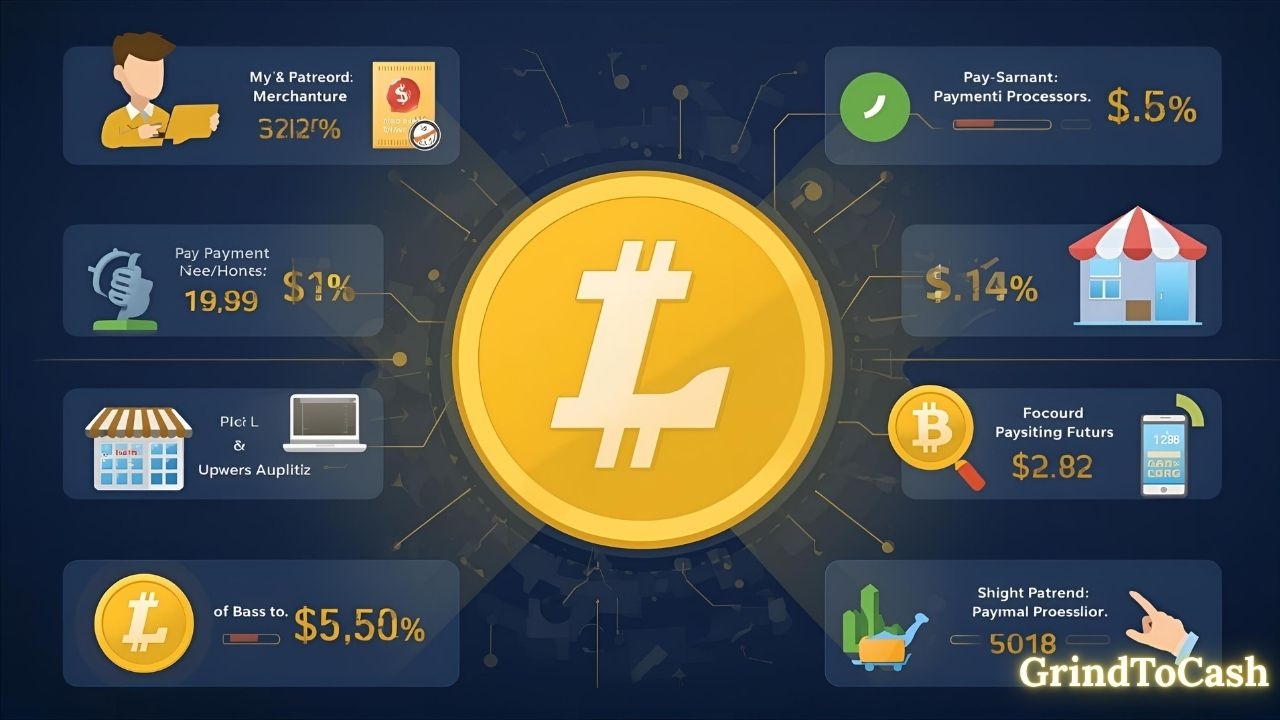
Litecoin’s Role in Payments and Merchant Adoption
From the early days, Litecoin sought merchant adoption through low fees and fast confirmations. Many merchants and payment processors have explored accepting Litecoin because it reduces friction compared to higher-fee networks. Additionally, Litecoin’s reliability and long track record give merchants confidence. For GrindToCash readers, merchant adoption matters: real-world payments drive consistent transaction demand and create a use case beyond speculation. When evaluating coins, always consider if merchants and wallets support practical spending — that often indicates healthier long-term utility.
Merchant tools and payment processors supporting LTC
Payment gateways that integrate Litecoin reduce barriers for business adoption. When gateways offer smooth conversion and low fees, merchants are more likely to test and keep the option live.
Consumer wallets and UX improvements
Wallets that focus on simple UX, fast sync, and fee estimation make spending Litecoin easier. Good wallet support spreads user adoption and incentivizes real transactions.
Real-world pilots and payment experiments
Market Behavior: Correlation, Cycles, and LiquidityVarious pilots have tested Litecoin in retail and online contexts. These experiments teach valuable lessons about settlement flows, volatility management, and merchant incentives.

Market Behavior: Correlation, Cycles, and Liquidity
Litecoin’s market behavior often tracks macro crypto cycles, with correlations to Bitcoin but also distinct liquidity and volatility patterns. Because of its long history and exchange listings, Litecoin generally maintains reasonable liquidity across major trading pairs. That said, its price can still react strongly to macro events, token unlocks in other projects, or sentiment shifts. For investors on GrindToCash, understanding how Litecoin moves in bull and bear markets — and how liquidity affects slippage — is crucial for sizing trades and managing risk.
Correlation with Bitcoin and macro drivers
Litecoin tends to follow Bitcoin’s broader trend because market sentiment and liquidity move together. However, relative performance can diverge when network-specific news or upgrades occur.
Liquidity across exchanges and trading pairs
Deep order books on major pairs reduce slippage for large trades. Still, smaller exchanges or exotic pairs can have thin liquidity that amplifies price movement.
Volatility management and trade sizing tips
Because LTC can move on market sentiment, traders should size positions using stop rules and consider using limit orders to control entry price and reduce execution risk.
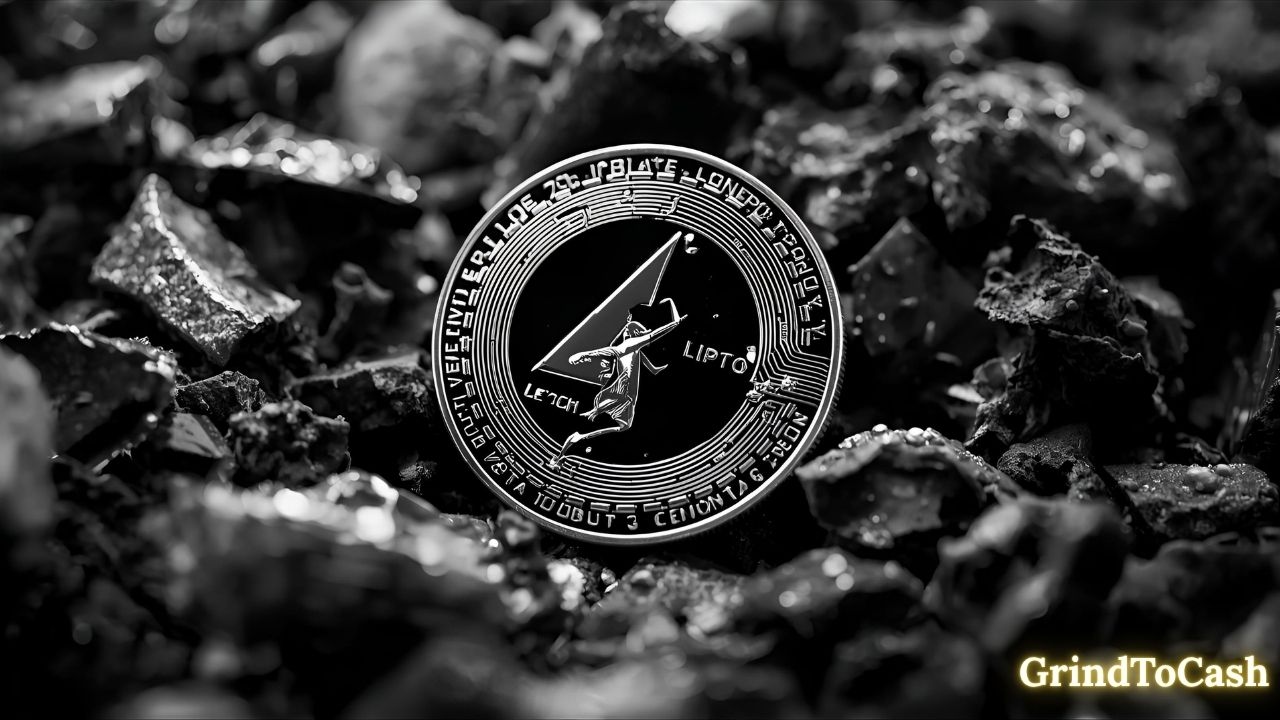
Community, Governance, and Development Activity
Litecoin’s development is community-driven with contributors and maintainers focusing on stability and gradual innovation. Governance is informal compared to some DAO models, but community consensus plays a large role in upgrade adoption. Active development, transparent proposals, and public roadmaps help build trust. For GrindToCash readers, community health signals matter: an engaged community means audits, documentation, and integrations are more likely, which reduces technical and adoption risk.
Open-source contributions and core maintainers
Active GitHub repos, public proposals, and community discussions show the project’s vitality. Regular commits and public audits indicate a healthy development cycle.
How governance decisions are made
Litecoin upgrades usually proceed by community consensus among core developers, miners, and node operators. This conservative approach favors stability, but it can be slower for feature rollouts.
Community initiatives and ecosystem partnerships
Events, developer grants, and partnerships expand Litecoin’s footprint. Local meetups and merchant programs increase real-world familiarity and usage.
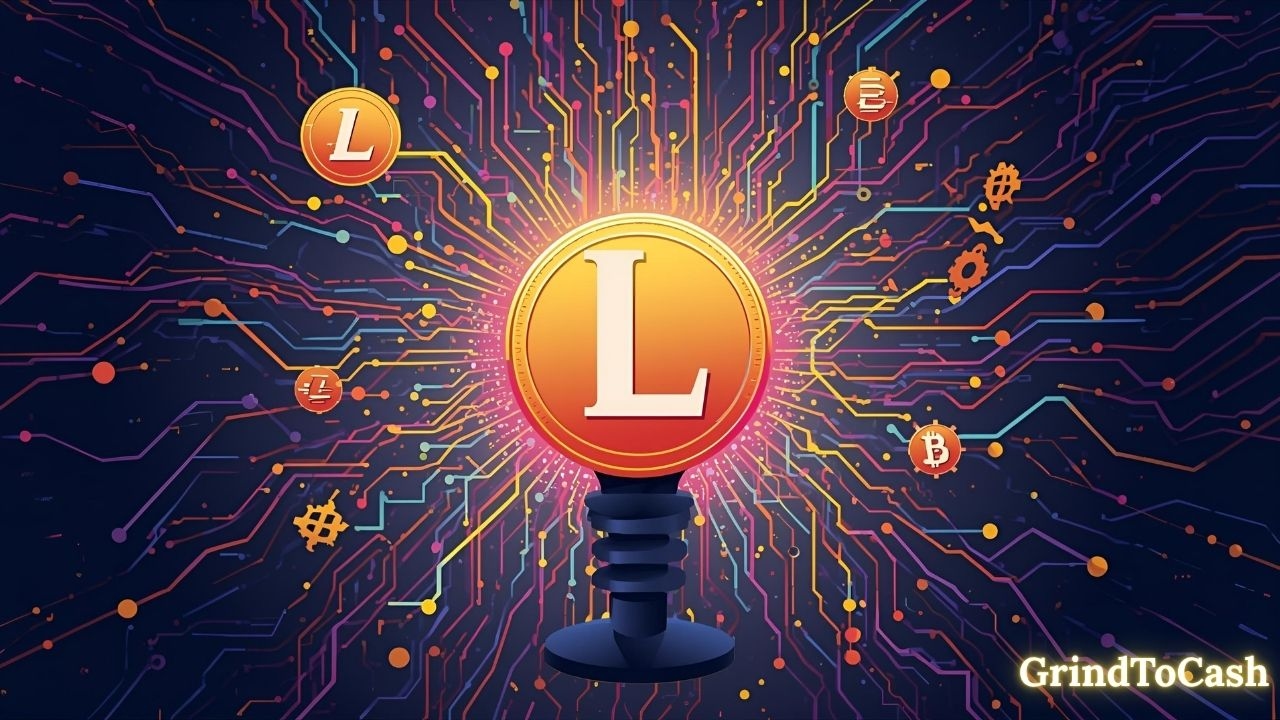
Risks, Criticisms, and What to Watch For
No project is without risk. Litecoin faces questions about long-term differentiation, competition from newer fast-layer solutions, and the ongoing need to innovate. Critics note that without a unique, defensible moat, older coins risk being sidelined. Additionally, security and centralization concerns occasionally surface, especially during mining concentration or infrastructure changes. For GrindToCash readers, the right response is not panic but preparation: monitor development activity, treasury or funding sources, and major integration announcements to assess whether Litecoin continues to serve its payment-focused mission.
Competition from new layer-1 and layer-2 payments solutions
Emerging blockchains and second-layer networks offer fast and cheap transactions, so Litecoin must maintain clear use cases and integrations to stay relevant.
Mining centralization and network security risks
If mining power concentrates in few hands, the network’s resilience can weaken. Watch mining distribution and changes in consensus behavior as part of due diligence.
The challenge of staying relevant without breaking stability
Maintaining a steady, reliable chain while innovating is hard. Too many radical changes risk destabilizing users; too little change risks obsolescence. Litecoin has historically favored cautious progress.
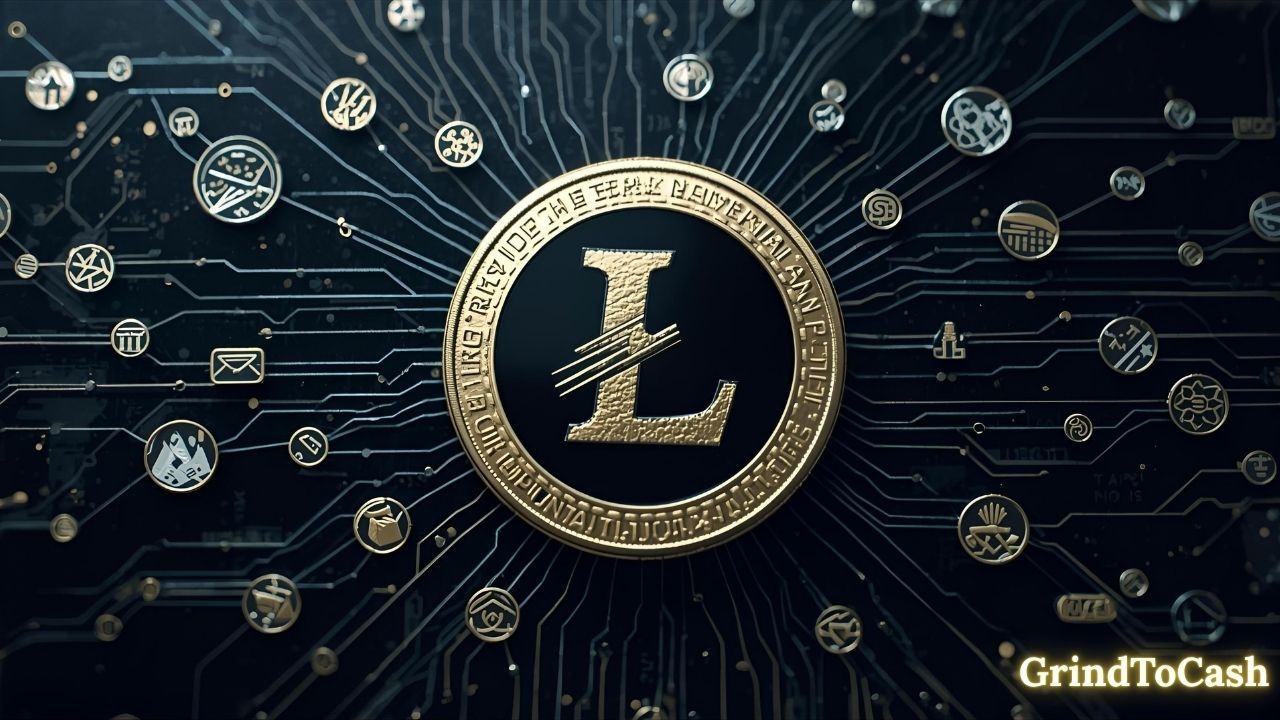
How to Research Litecoin and Use It Wisely Today
If you’re evaluating Litecoin for investment or use, follow a simple checklist: verify official sources for software and contract addresses, check developer activity, review merchant support, and compare fees and transaction times. Also monitor macro crypto trends and liquidity on exchanges you use. For users focused on payments, test wallets and conversion flows. For investors, set position-size rules and watch for network milestones that could affect demand. At GrindToCash we recommend combining technical checks with real-world usage signals — that mix separates noise from genuine, sustainable adoption.
Practical checklist for investors and users
Confirm the official wallet, check node counts, review exchange liquidity, and follow roadmap updates. Use small test transactions to validate wallet and merchant integrations.
Tools and metrics to monitor regularly
Track on-chain metrics (transaction volume, active addresses), exchange depth, and developer commits. Alerts for major upgrade proposals help you react early.
Position sizing and long-term thinking for LTC holders
Decide allocation based on your risk tolerance and the role LTC plays in your portfolio (payments vs. store-of-value). Use stop-losses and rebalance when markets change.








